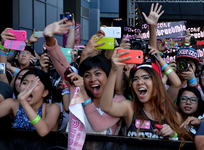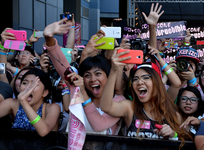- Joined
- 26.03.25
- Messages
- 20
- Reaction score
- 35
- Points
- 3
Setting: The vibrant worlds of K-Pop and J-Pop fandoms, where social media is a crucial communication tool for millions of fans.
Incident Overview: In early 2024, a mass phishing attack targeted K-Pop and J-Pop fans through Instagram, exploiting the popularity of idols and music events. Dubbed "The K-Pop Conspiracy," the attack compromised numerous fan accounts and led to significant financial losses.
Technical Details: The attackers developed a multi-layered approach that included targeted ads, and mass DM. They created an elaborate scheme involving fake contests where participants were promised exclusive merchandise, concert tickets, and meet-and-greet opportunities.
Tactics Used:
- Targeted Phishing Campaigns: Using data analytics tools, the attackers identified active fan accounts with high engagement rates. They crafted messages that included exclusive offers, enticing fans to click on links. For example, If Kpop singer Momo's fans are the targets, Mass dm related to a Momo special event will be sent to them. There are services to help hackers send targeted mass dms.
- Browser Exploits: The phishing site was designed to exploit vulnerabilities in popular web browsers, allowing the attackers to install malware that could capture keystrokes and extract saved passwords typically a stealer/rat.
- Credential Stuffing: Once they obtained a list of compromised credentials, the attackers employed credential stuffing attacks on other platforms, taking advantage of users who reused passwords.
Scam Letter 1: Fan Club Verification Format
Message:
Scam Letter 2: Contest Winner Notification
Message:
Scam Letter 3: New Album Pre-Sale Alert
Message:
Impact:
The K-Pop Conspiracy resulted in the compromise of over 400,000 accounts, leading to estimated losses of around $20 million. Many fans found their accounts drained or used for unauthorized purchases of merchandise. The psychological impact on fans, who felt betrayed by their idols, led to widespread outrage on social media.Aftermath: In response to the crisis, K-Pop and J-Pop agencies worked closely with cybersecurity firms to educate their fanbases on online security. I
Attachments
Last edited:






